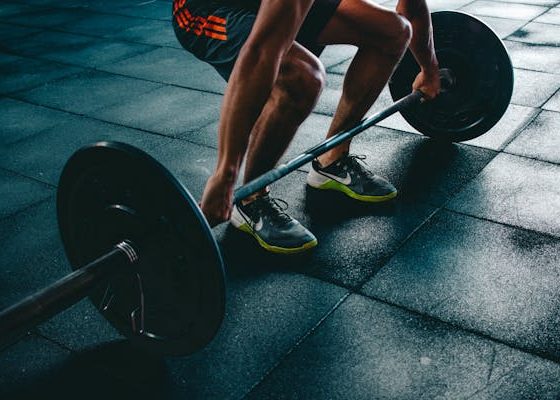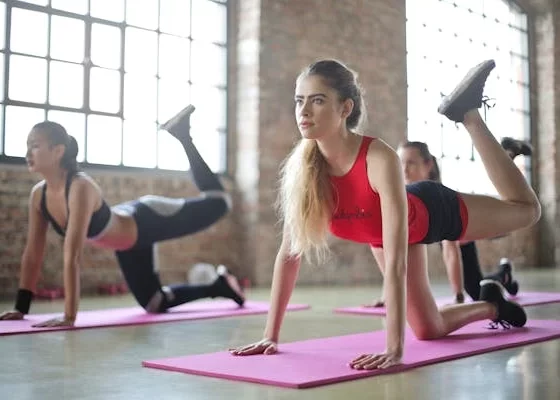Weight loss is often linked to calorie consumption. Many people are interested in knowing which exercises burn the most calories. After all, life is busy! The more calories you can burn in a given period of time, the more efficient your exercise program will be. In this article, we will delve into 5 top calorie-burning exercises.
Calories and Losing Weight
A calorie serves as a measure of the energy content in food or beverages. Ideally, individuals consume only the energy their bodies require, but this is seldom the reality. Excess energy is typically stored as fat. To address this, people endeavour to reduce their calorie intake, increase calorie expenditure through exercise, or combine both methods to shed excess fat.
If you aim to lose weight, you might be tempted to reduce your calorie intake to achieve your goals drastically. However, it is important to proceed cautiously. Reducing daily calorie intake to less than 1,200 calories can present challenges in obtaining all essential nutrients needed for maintaining good health.
Additionally, consuming too few calories can hinder weight loss and may result in weight gain due to the body entering starvation mode, leading to fat storage.
Furthermore, extreme calorie restriction could have adverse effects.
How many calories do I burn in a day?
Throughout an ordinary day, your body typically expends between 1,300 to 2,000 calories in the absence of physical activity. By incorporating additional exercise, you can increase your calorie expenditure.
“Regular exercise not only helps burn calories, reducing the need for significant dietary cutbacks, but it also builds muscle, which in turn increases your basal metabolic rate,” explains Zumpano. “This allows for a more balanced diet and ensures that you receive all the necessary nutrients.”
Maximizing Calorie Burn
Estimating the number of calories burned in an hour for any given activity is not a perfect science. The numbers given here are estimates that may vary based on your age, sex, body weight and body composition. Calorie burn can also increase or decrease based on exercise intensity, so remember that the harder you work, the more calories you’ll end up burning.
For any exercise that you participate in, you can maximize your calorie burn by ramping up the intensity and incorporating additional movements or skills into your workout.
According to lists compiled by the American Council on Exercise and the Mayo Clinic, the following exercises comprise the top 10 calorie burning activities. These calorie estimates are based on an average, 160-pound individual performing the activity for one hour.
| Activities | Calories Burned Per Hour |
| Running, 8 mph | 986 |
| Rollerblading | 913 |
| Jumping Rope | 730 |
| Tae Kwon Do | 730 |
| Stair Climbing | 657 |
| Swimming (crawl, moderate intensity) | 618 |
| Skiing, Cross Country | 600 |
| Aerobic Dance | 588 |
| Jogging, 5 mph | 584 |
| Playing in a Basketball Game | 584 |
Factors Influencing Caloric Expenditure:
Various factors influence the number of calories burned during running.
Body Weight
Caloric expenditure increases with higher body weight. For instance, a 140-pound individual running at a 10-minute mile pace burns around 318 calories in 30 minutes, while a 180-pound person burns roughly 408 calories at the same pace for the same duration. This is because the body expends more energy to carry additional weight.
Gender
Gender may impact caloric expenditure, although findings vary. Generally, men are assumed to burn more calories during similar activities, possibly due to differences in muscle mass. However, specific factors contributing to this disparity remain unclear.
Speed
They are running at a faster pace, resulting in higher caloric expenditure. For example, a 160-pound person running a 12-minute mile pace burns about 290 calories in 30 minutes, whereas the same individual running a 10-minute mile pace burns approximately 363 calories in the same duration. Increased speed signifies greater effort, leading to increased calorie consumption.
Incline
Running uphill typically increases calorie burn as it demands greater effort. However, accurately determining calorie expenditure on inclines can be challenging. Treadmill calculations account for incline, but outdoor running variations may affect accuracy. While online calculators offer estimates, precise input regarding hill grades is necessary. Additionally, downhill running requires less effort, impacting overall calorie burn during the entire run.
Surface Considerations
The surface you run on—road, treadmill, trail, or sand—affects your caloric expenditure. You are generally running on a treadmill, which results in the lowest calorie burn due to the absence of wind resistance and terrain obstacles.
Running on sand or navigating muddy or rocky trails demands slightly more energy. Negotiating uneven surfaces requires engaging additional muscles and expending more energy to maintain balance and stability.
Weather Impact
Running in windy conditions often intensifies your workout, potentially increasing calorie burn if you sustain your pace. Additionally, there’s an ongoing debate within the running community regarding whether extreme cold or heat affects calorie expenditure during exercise.

The 5 Top Calorie-Burning Exercises:
Running
You don’t have to run at an eight-mile-per-hour pace in order to blast lots of calories. Even if you’re new to the sport, there are ways to burn up calories without killing yourself in the process. Try increasing your total calorie burn by performing intervals while you run.
Basically this means you will speed up and really push yourself for 30 to 90 seconds, then you’ll slow down and perform “active rest” for another 30 to 90 seconds, continuing to alternate between high intensity exercise and lower intensity exercise for as long as you can. Because your body has to continue challenging itself to adjust to the increased exercise intensity, then to recover, you actually end up burning as many or more calories as you would running at a steady state.
Another way to maximize calorie burn while running is to incorporate hills into your routine. When you run up a hill, you actually have to lift your body’s weight up the hill, forcing your muscles to work harder and burn more calories.
Typically, running stands out as one of the most effective calorie-burning methods. As an illustration, a 140-pound individual completing a 5K (3.1 miles) with a pace of 10 minutes per mile can expect to burn roughly 328 calories over a 31-minute duration.
A runner of average size typically burns about 100 calories per mile. Therefore, to burn 500 calories, you’d need to run approximately five miles.
Rollerblading
Rollerblading blasts lots of calories because it requires your body to engage during the movement, plus you have to constantly work to retain your balance while in motion. You can increase your calorie burn while rollerblading in a similar fashion to running: add intervals and rollerblade up hills. You may also want to try wearing a weighted vest while you rollerblade to increase your body’s weight and increase calorie burn. Essentially, it’s harder to move a heavier mass than a lighter mass, so wearing a vest will force your body to work harder.
On average, Rollerblading and running result in similar calorie expenditure per hour. For instance, a 160-lb. individual Rollerblading for one hour burns approximately 913 calories, whereas running at 8 mph burns roughly 986 calories for the same person. However, you can elevate the average calorie burn per hour by Rollerblading uphill or faster.
It’s important to recognize that the number of calories burned varies individually and is influenced by multiple factors. Firstly, it depends on your body weight. For example, an individual weighing 160 pounds typically burns approximately 913 calories per hour of rollerblading. A person weighing 200 pounds may burn around 1,138 calories, while someone weighing 240 pounds might burn approximately 1,363. Secondly, the intensity of your workout also plays a role in your outcomes – the faster you skate, the more calories you’ll likely burn.
Jumping Rope
Jumping rope is one of those exercises that seems like it will be fun and easy but is really a killer. Because it’s such a high-impact exercise, consider working your way into a routine slowly, starting with brief 30 to 60 second jumping intervals followed by 30 to 60 seconds of rest. Once you get into the swing of things, speed up the rate that you turn the rope, incorporate trick moves like backward jumping, side-to-side jumping, one-legged jumping or criss-crossing your arms to challenge your body and burn more calories. You may also want to consider picking up a weighted jump rope that will challenge your arms and shoulders more as you perform the exercise.
For numerous individuals, working out can often seem like a tedious task. Nevertheless, incorporating jumping rope into your routine can inject a sense of fun and effectiveness into your exercise regimen. Moreover, you can tailor your jump rope sessions to introduce variety and challenge as you progress.
The more enjoyment you derive from your workouts, the greater the likelihood of maintaining a consistent long-term exercise routine. Additionally, it effectively burns many calories within a brief timeframe, creating the calorie deficit necessary for weight loss.
Calorie expenditure during exercise is mainly affected by factors like the duration of the workout, its intensity, and the individual’s body weight.
For instance, a person weighing 200 pounds (91 kg) may burn approximately 362 calories from 20 minutes of vigorous jumping rope or about 241 calories when jumping rope at a slower pace.
Incorporating jump rope into your daily regimen can thus play a role in establishing a calorie deficit essential for weight loss efforts.

Taekwondo
In the context of taekwondo, it represents a rigorous cardiovascular workout. The extensive jumping and drill routines contribute to active calorie expenditure. As per the Mayo Clinic, an hour of taekwondo can burn 752 calories for an individual weighing 160 lbs.
However, calorie-burning constitutes just one aspect of the equation. Another unexpected mechanism through which taekwondo facilitates weight loss is suppressing the appetite.
Stair Climbing
Ascending stairs ranks among the top exercises for fat burning, strengthening the lower body, and toning muscles such as the buttocks, thighs, and calves. It aids in shedding inches from areas like love handles and the belly while building strong abs. Additionally, climbing stairs offers significant benefits for lung capacity and cardiovascular health.
Ascending and descending stairs results in a higher calorie burn than walking on a level surface at a moderate pace. The number of calories burned is contingent on your weight. Descending stairs burns between 175 and 275 calories per hour while ascending stairs burns approximately 530 to 835 calories per hour. Walking a 20-minute mile burns around 175 to 275 calories per hour.
Stair climbing leads to increased calorie burning as it involves activating your body’s major muscle groups to lift your body weight, step by step, repeatedly. Therefore, using your muscles to support your weight far surpasses running in terms of calorie expenditure.
Conclusion:
Activities resulting in the highest number of calories burned per hour are the ones that generally make you sweat the most and leave you the most exhausted, but remember that almost any moderate- to high-intensity exercise is sufficient for health and weight maintenance. The most important thing is to choose exercises that you enjoy and that you’ll perform on a regular basis.




